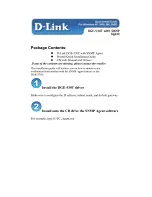
•
Text surrounded by [ ] may be replaced by an optional parameter.
•
Parameters surrounded by {} must be entered one or more times, as appropriate for the
executed command.
•
Do not enter the command line definition characters (<>, [ ], and {}) on the command line.
Syntax:
cfggen <controller #> <command> <parameters>
NOTE:
The program name, controller number, command, and parameters fields must be
separated by the ASCII space character. The format of the parameters is command specific. The
program return value is returned to the user when the program exits. A value of 0 is returned if
the command is successful. Otherwise, a value of 1 is returned.
Rules for creating IM volumes and hot spare disks:
The following rules apply when creating IM volumes and hot spare disks:
1.
All disks that are part of an IM volume or a hot spare for an IM volume must be on the same
SAS controller.
2.
IM volumes are supported.
3.
Only two IM volumes (plus a global hot spare) per controller can be created.
4.
An IM array must have exactly two disks.
5.
A hot spare disk cannot be created without at least one IM volume already created.
6.
The utility does not allow adding a hot spare disk of type different from disk types in any
of the volume.
7.
With the
AUTO
command all drives used are the same type as the first available disk found,
and the size is limited to the size of the smallest disk.
The cfggen Command Set
Using the CREATE Command
The CREATE command creates IM volumes on the SAS controller. Firmware and hardware
limitations for this family of cards limit the number of configurations that are possible.
Syntax
cfggen <controller #> create <volume type> <size> [qsync] [noprompt]
Parameters
<volume type>
Volume type for the volume to be created. Valid value is IM.
<size>
Size of the IM volume in Mbytes or “MAX” for the maximum size available.
[qsync]
Quick synchronization of the volume created.
[noprompt]
Eliminates warnings and prompts.
Operation
Once a disk has been added to an IM volume, all of its storage capacity may or may not be used
depending on drive capacity and volume capacity. For example, if you add a 36 GB disk drive
to a volume that only uses 9 GB of capacity on each disk drive, the remaining 27 GB of capacity
on the disk drive is unusable.
The first disk specified on the command line will be assigned as the primary disk drive when
creating an IM volume. If the SAS controller is allowed to resync the disk drives, the data on the
primary disk drive will be available by accessing the newly created volume.
42
Configuring the Controller Offline
















































